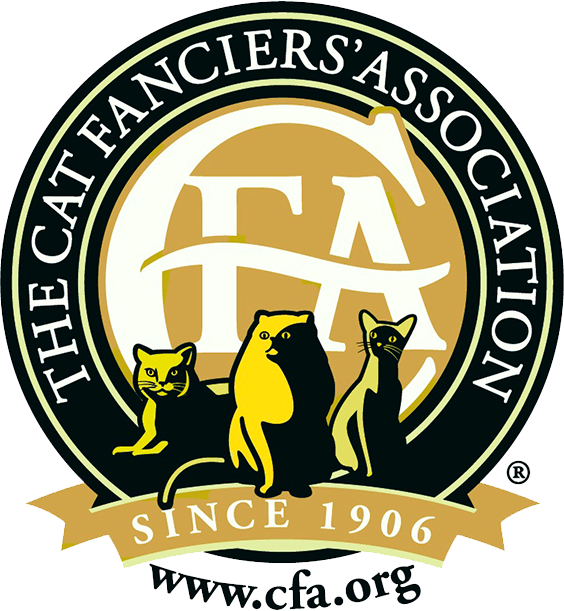The history of the Bengal cat begins in the USA in 1961. The author of the breed was Jean Mill (back then, Sugden). According to her degree, Jean was a geneticist-biologist. During the college years, she was interested in the matter of breeding cats. The theme of one of Jean’s final projects was the possibility of crossing Siamese and Persian cats. As a result of this crossing, a very curious panda cat would have turned out. After graduation from the university, Jean continued breeding work with the Persian cats. She was one of the first, who supported the breeding of the Himalayan cats.
 In 1961, Jean Mill was on a business trip in Bangkok, Southeast Asia. The nature of this region represented a natural habitat for wild cats Felis Bengalensis, similar in size to domestic cats. At that time, this species was on the verge of extinction due to poaching, adult animals were exterminated due to the value of their skins, and small kittens were sold to tourists in the local market as live souvenirs. Jean bought a kitten and brought it to the United States, giving the cat the name of Malaysia.
In 1961, Jean Mill was on a business trip in Bangkok, Southeast Asia. The nature of this region represented a natural habitat for wild cats Felis Bengalensis, similar in size to domestic cats. At that time, this species was on the verge of extinction due to poaching, adult animals were exterminated due to the value of their skins, and small kittens were sold to tourists in the local market as live souvenirs. Jean bought a kitten and brought it to the United States, giving the cat the name of Malaysia.
Growing up at home conditions, Malaysia had the character of a wild animal. She was incredulous, cautious, did not take affection and did not go to contact, preferred solitude, although she did not show aggression. Malaysia was climbing somewhere higher to sleep, in order to be out of reach. However, during the Estrous cycle Malaysia well received the courtship of black domestic cat, who lived with Jean. As a result of this interbreeding, to everyone's surprise, in 1963 a viable healthy hybrid puppy with mottled markings, inherited from the mother, named Kin-Kin appeared. Jean decided to work on cat breeding, outwardly similar to exotic forest predators, but possessing the disposition of pets. So, when Kin-Kin grew up, in the absence of other candidates, she was copulated with that same black domestic cat. This work of Jean on the creation of a special cat was stopped due to the death of her first husband. Malaysia was adopted out to the zoo, and Kin-Kin died being unable to cope with pneumonia.
 15 years later, Jean (now Mill) learned about a comparative study of the immunity of wild and domestic cats in the laboratory of the University of California, USA. During the study, scientists have found out that some wild cats have immunity to the virus of feline leukemia. It remained to figure out whether this immunity is congenital or acquired during the life of a cat in the wild. To achieve that, interspecific crossings of wild leopard cats and domestic cats of various breeds were carried out. Jean Mill asked the head of the scientific group Willard Centerwall to give her some females of the first generation (F1) hybrids and received 9 females. Since then, she began a serious work on the creation of a domestic, in the full sense of the word, Bengal cat.
15 years later, Jean (now Mill) learned about a comparative study of the immunity of wild and domestic cats in the laboratory of the University of California, USA. During the study, scientists have found out that some wild cats have immunity to the virus of feline leukemia. It remained to figure out whether this immunity is congenital or acquired during the life of a cat in the wild. To achieve that, interspecific crossings of wild leopard cats and domestic cats of various breeds were carried out. Jean Mill asked the head of the scientific group Willard Centerwall to give her some females of the first generation (F1) hybrids and received 9 females. Since then, she began a serious work on the creation of a domestic, in the full sense of the word, Bengal cat.
In the process of breed development, hybrid F1 females were mated with domestic cats of different breeds, including Burma and Mau. In 1982, Jean successfully got a small wild cat with a patchy golden-orange color, which had never been seen in domestic cats. She met him at one of the zoos in New Delhi (India). In truth, the kitten was without a tail - rhinoceroses squashed it. Bringing the cat home, Jean gave him the nickname Delhi and registered it in the CFA (Cat Fanciers Association) as an experimental Mau.
Bengal cat in a home environment After growing up, Delhi became the most suitable groom for Jean’s cats. All the kittens were born from him had an amazing shine of wool, the so-called glitter, which was assigned to the Bengal breed. Jean continued to work actively on creation of her dream cat. The difficulty was that males of the first three hybrid generations in 70-80% were sterile. In addition, not all kittens had beautiful leopard rosettes. Jean involved to her breeding work wild Bengal cats from India. In 1991, Bengal cats took part in the TICA championship for the first time. Jean Mill showed the world a gentle contact creation, enclosed in a wild fur coat.
Up to date, the Bengal breed has been recognized by almost all felinological organizations. A bizarre color for a domestic cat attracts in the representatives of this breed. Saturated spots of black or chocolate color on a golden-orange background draw the eye. The wool of Bengal cats feels like a valuable fur to the touch - dense, short and soft. Body muscular, strong, elongated in length, with strong bones, small eyes on large head, powerful legs (hind legs longer than forelegs). A short thick tail resembles a fluffy tube with a black tip. Female cats are slimmer and more elegant, male cats are stronger and muscular. The movements of the Bengals are full of grace. They remind of leopards in every way.
As with any breeding work, at the very beginning of the Bengal breed development, there were used cats of various breeds in the process of hybridization. So, hereafter, the Bengal blood carried in their genes some of the signs inherent in other breeds of cats. Many of them have been eradicated, but some have made themselves felt so far. Such a sign, for example, is the Bengals’ long wool. Initially, such animals were culled from breeding work. However, for several years now, such a wool has caused increasing interest among breeders and admiration among cat lovers. Longhaired Bengals are now called Cashmere or Silk Bengal.








